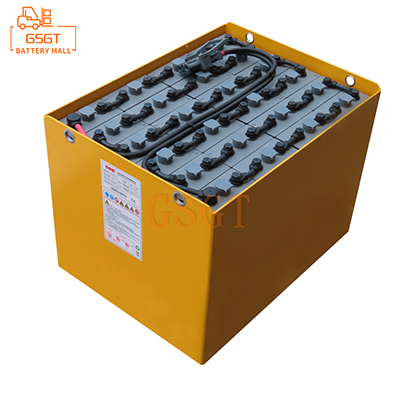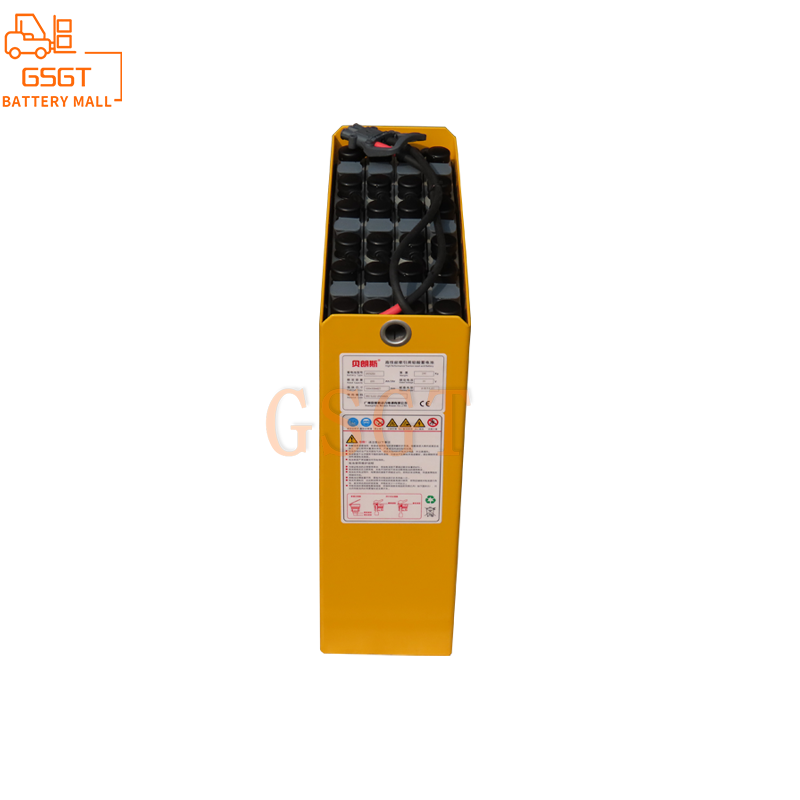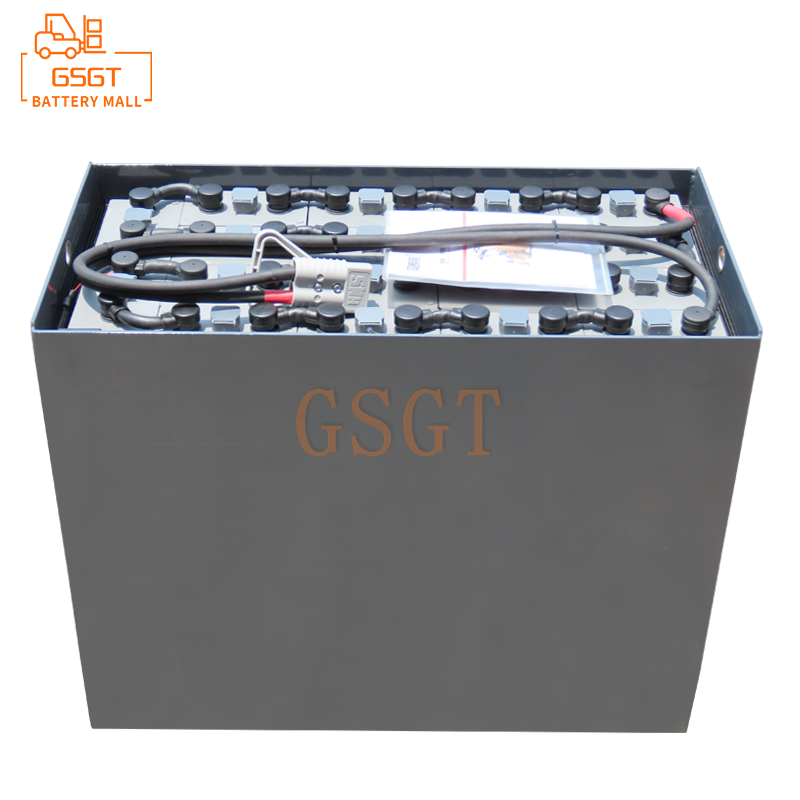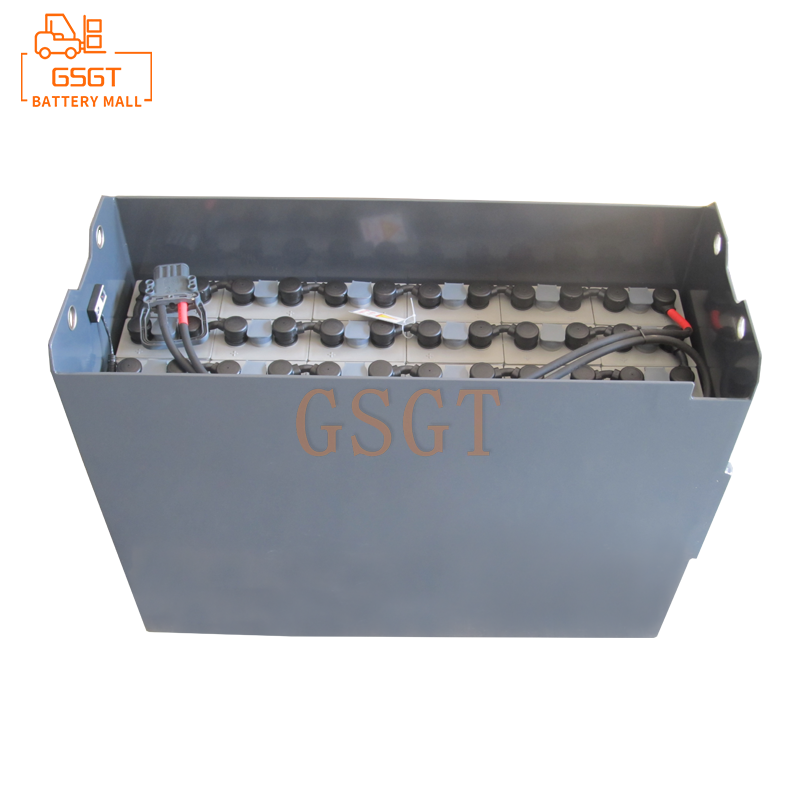Time:2025-04-12 09:42:26
Browse:473
In the field of industrial logistics, forklift as a key handling equipment, one of its power sources - traction lead-acid battery safety performance is very important. The forklift operating environment is complex, frequent start and stop, heavy load handling, the battery should not only provide stable power, but also ensure that there is no safety hazard in various working conditions, and ensure the safety of operators' lives and enterprise property. In-depth analysis of its safety performance is helpful for users to scientific maintenance, reasonable selection, maximize the efficiency of the battery, and reduce the risk of accidents.
Structural foundation to build a security line
The lead-acid battery for forklift is composed of positive and negative plate, electrolyte, partition, shell and other core components. The positive and negative plates are made of special alloy materials, such as lead-calcium alloy, which has good electrical conductivity and corrosion resistance to ensure the stable electrochemical reaction during charge and discharge, and reduce the risk of short circuit caused by plate deformation and corrosion. For example, the high-quality plate manufacturing process accurately controls the alloy composition and grid structure, enhances the mechanical strength, and can maintain the structural integrity even in the vibration environment caused by frequent acceleration and deceleration of the forklift truck, avoid the active material falling off the plate, and prevent serious accidents such as battery overheating and fire caused by internal short circuit.
Electrolyte as an ion transport carrier, usually dilute sulfuric acid solution, its concentration and purity are strictly controlled. The appropriate concentration of sulfuric acid can not only ensure the electrochemical reaction efficiency, but also prevent the concentration of too high to accelerate plate corrosion, too low will reduce the capacity and performance of the battery. In the production process, the strict detection of the impurity content of the electrolyte to eliminate the mixing of harmful metal ions, because these impurities may cause microbattery reaction inside the battery, local overheating, affecting the safety and life of the battery.
The separator is between the positive and negative plates and is a key barrier to prevent short circuits. The high-performance partition has good ion permeability, ensuring the smooth migration of electrolyte ions, while the physical strength is high, can withstand the expansion and contraction of the plate, and the chemical stability is strong, and does not react with the electrolyte. Such as the use of microporous rubber partition or glass fiber partition, the aperture is small and uniform, effectively block the direct conduction of electrons between the plates, and build a solid foundation for the safe operation of the battery from the structural level.
Charge-discharge characteristics and safety control
During the charging process, the lead-acid battery follows a specific electrochemical reaction law. When the charger is connected, the current promotes the oxidation of lead sulfate on the positive plate to lead dioxide, the reduction of lead sulfate on the negative plate to spongiform lead, and the concentration of sulfuric acid in the electrolyte gradually increases. However, improper charging is very easy to cause safety problems, and when overcharging, a large amount of gas will be generated inside the battery, mainly hydrogen and oxygen. Hydrogen is flammable and explosive. In the closed forklift battery compartment, if the ventilation is poor, the hydrogen accumulation reaches the explosion limit, and the explosion may be caused by open fire or electrostatic spark. Therefore, high-quality charging equipment is equipped with accurate charging control algorithm to monitor battery voltage, current, temperature and other parameters, and automatically reduce the charging current when the battery is close to full, entering the trickle charging stage to prevent overcharging phenomenon.
When discharging, the forklift starts, runs, loads and other operations make the battery continue to output electric energy. High current discharge is a common working condition of forklift truck, and the demand for high current at a moment puts great test on battery performance and safety. If the battery capacity is insufficient or the internal resistance is too large, under high current discharge, the battery will quickly heat up, accelerate plate aging, and even cause the plate to burn. In order to deal with this problem, the structure and material of the plate are optimized to reduce the internal resistance and improve the high current discharge ability. The forklift control system is also equipped with the current limiting function to avoid excessive instantaneous current impacting the battery, ensure the discharge process is safe and stable, and maintain the stable power output of the forklift.
Thermal management and safety assurance
Thermal management is an important part of safety performance of lead-acid battery for forklift. The battery inevitably generates heat during the charging and discharging process, and if the heat accumulation cannot be effectively distributed, it will accelerate the aging of the battery, and even cause thermal runaway. Thermal runaway is an extremely dangerous situation in which the internal temperature of the battery rises sharply and the electrochemical reaction is out of control, which may lead to the battery fire and explosion.
In order to solve the problem of heat dissipation, the battery shell is made of materials with good heat dissipation performance, such as thermal conductive filler added to engineering plastics, to enhance the heat dissipation efficiency of the shell. Some advanced battery designs also have built-in cooling pipes, which take away the internal heat of the battery through circulating coolant, and maintain the operating temperature of the battery in the appropriate range (usually 25℃-40℃). In the design of the forklift battery bin, the ventilation path is reasonably planned, and the air flow or forced ventilation device when the forklift is driving is used to discharge the heat generated by the battery out of the car in time. At the same time, the battery management system (BMS) monitors the battery temperature in real time, and once the temperature rises abnormally, measures such as power reduction and stop charging and discharging are taken immediately to prevent thermal runaway accidents and comprehensively ensure the thermal safety of the battery under different working conditions.
Daily maintenance and safety improvement
Routine maintenance is very important to keep the safety performance of lead-acid batteries for forklift trucks. Check the electrolyte level regularly, if the liquid level is too low, add distilled water in time to prevent the plate from drying out and damaging, affecting the battery performance and safety. At the same time, clean the battery surface, remove dust, acid and other pollutants, to avoid the risk of short circuit, especially the terminal part, keep clean to reduce the contact resistance, reduce heating risks.
Periodically check the capacity of the battery and balance the charge. With the increase of the use time, the capacity of each cell in the battery will be different. During the charging and discharging process of the unbalanced battery, some cells will be overcharged or over-discharged, accelerating aging or even damage. Through balanced charging, the voltage and capacity of each battery are consistent, which extends the overall battery life and ensures the safety performance. The operator also needs to pay attention to the appearance of the battery to check whether the shell is cracked or deformed. Once found, replace the battery in time to prevent the leakage of the electrolyte from causing safety accidents and environmental pollution.
The safety performance of lead-acid battery for forklift includes structural design, charge and discharge management, thermal management and daily maintenance. From manufacturing to practical applications, the strict control of each link is to ensure the safe and reliable operation of batteries in forklift operations. Only by deeply understanding the principle of its safety performance and taking scientific and effective maintenance measures can we give full play to the role of the traction lead-acid battery in the power system of the forklift truck, provide a solid guarantee for the efficient and safe operation of industrial logistics, and reduce the potential losses and risks caused by battery safety problems.

$3405

$1270

$2140

$2040

MESSAGE
Professional And Efficient
Security
Affordable Price
Professional Services